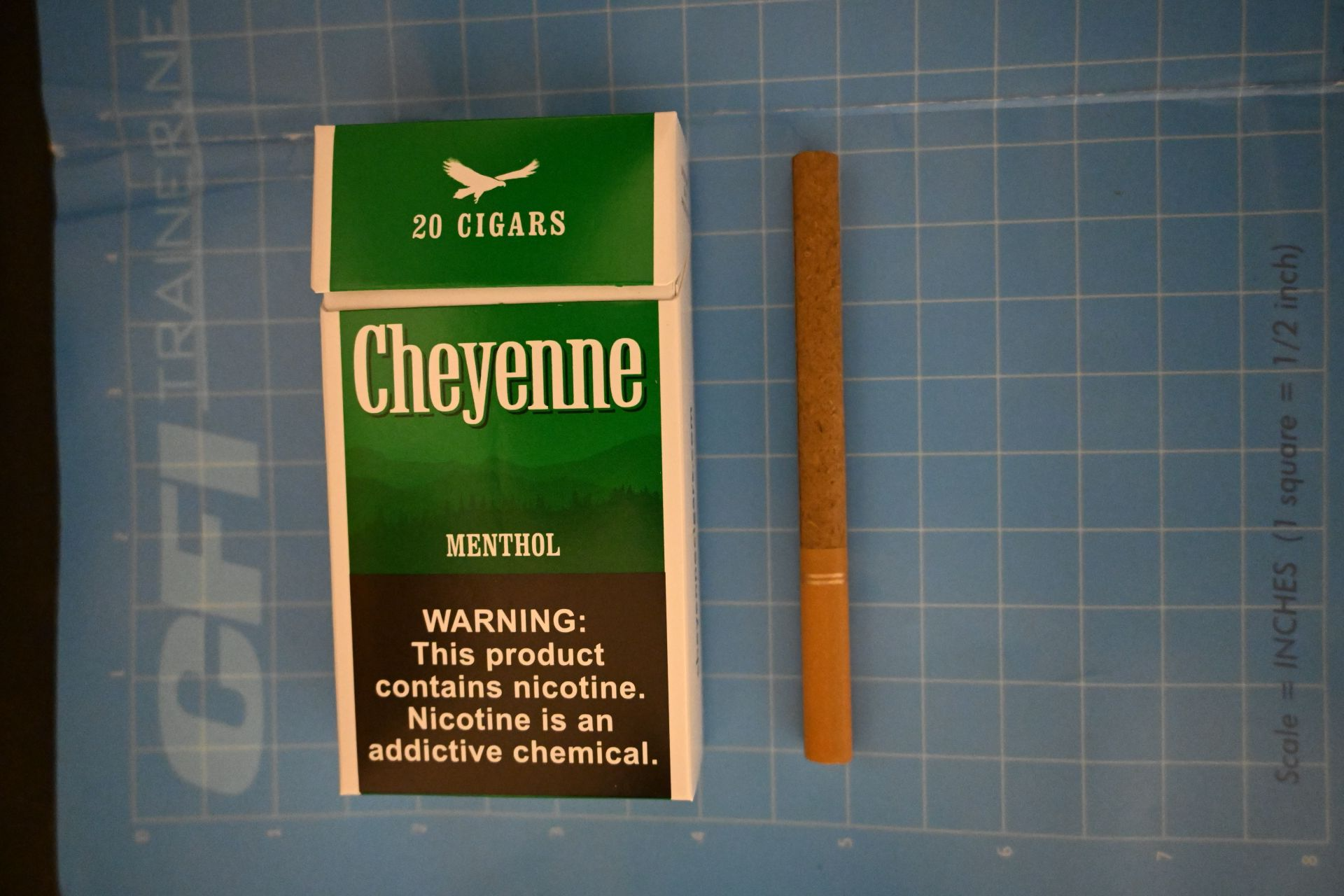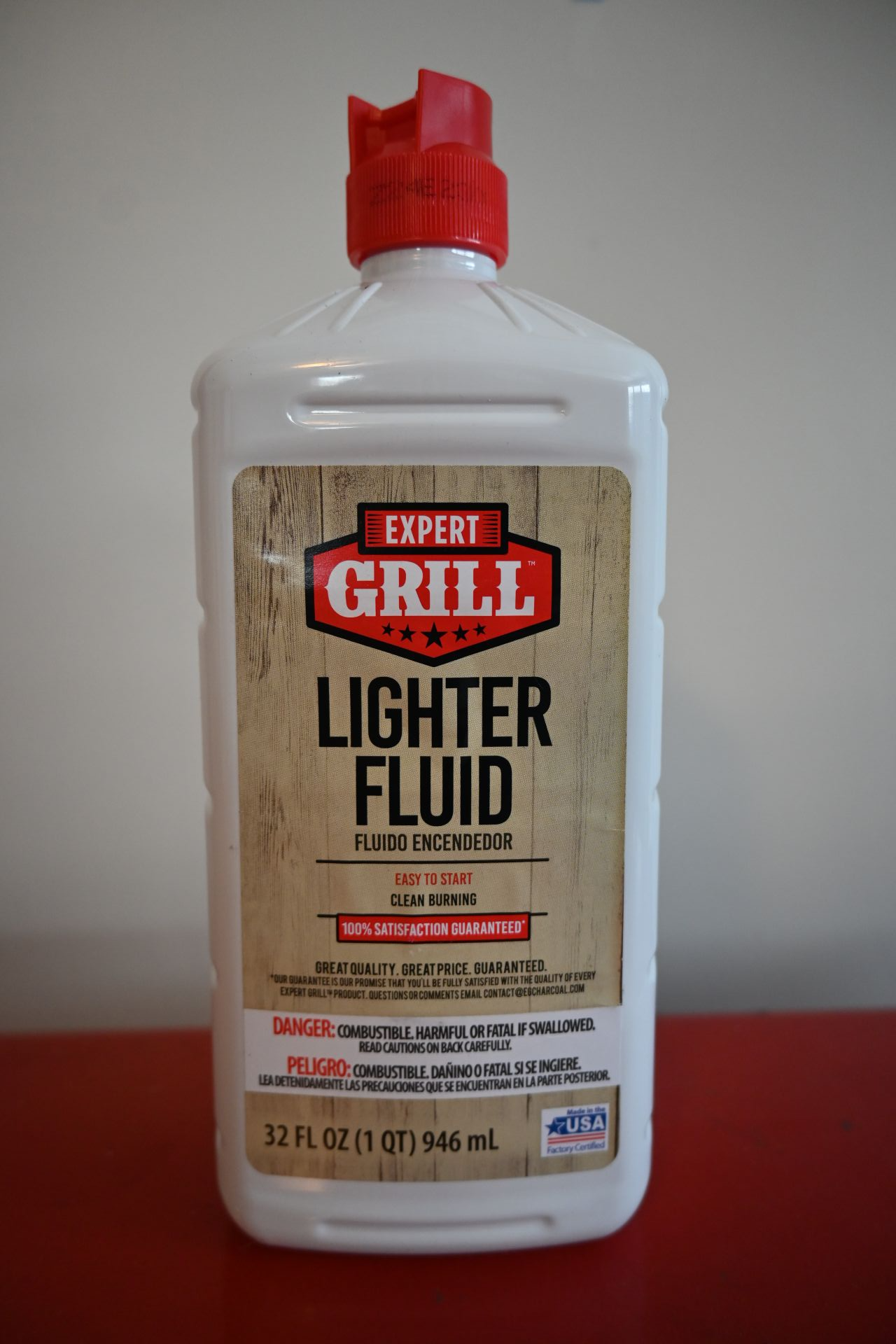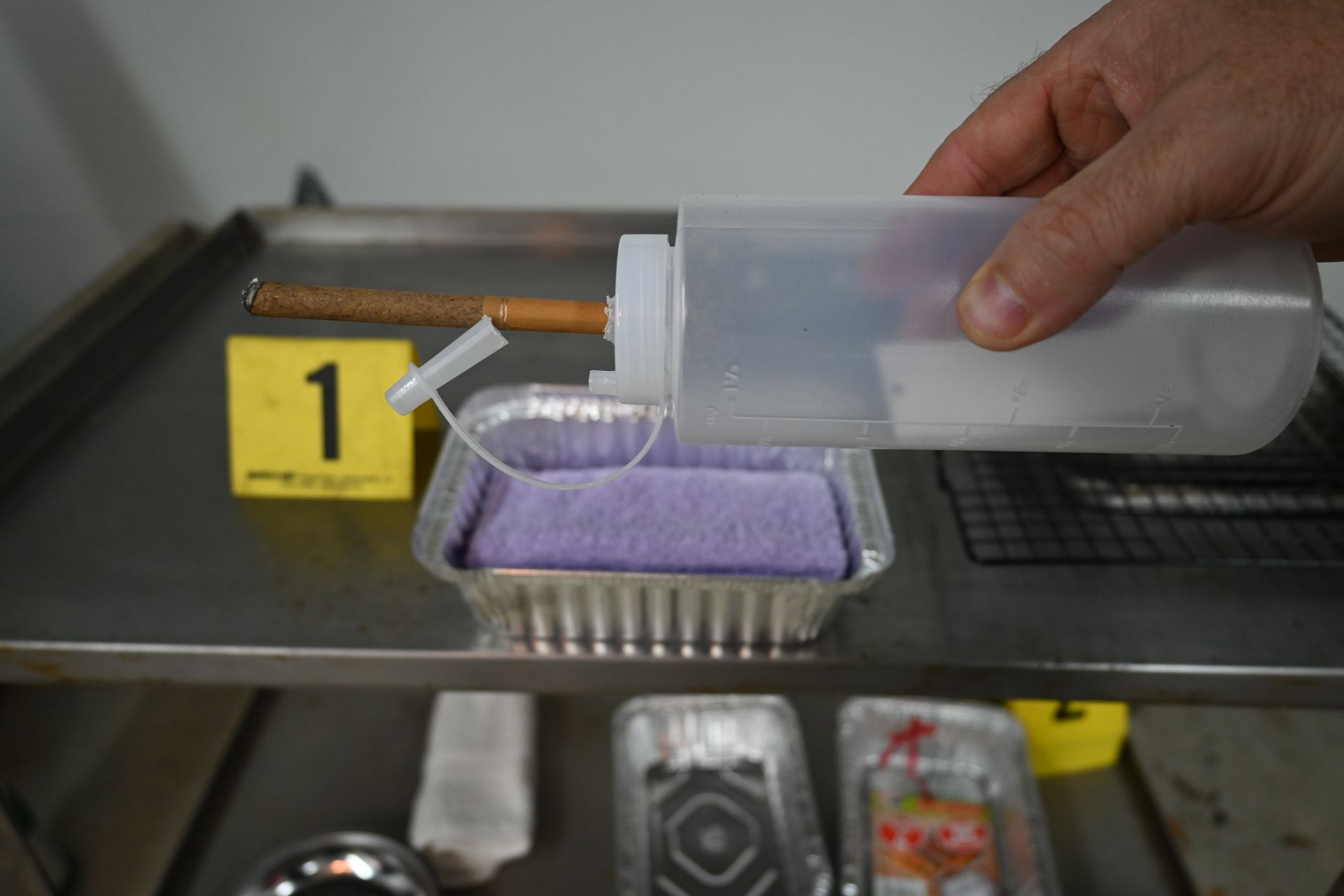Background
Fire Investigators have recently benefitted from several presentations and papers examining the competency of cigarettes as an ignition source for gasoline. It is generally accepted that cigarettes are not a competent ignition source for gasoline. However, less is known about cigarettes and lighter fluid. A recent investigation brought to light the question as to whether a smoking material would be competent ignition source for igniting charcoal lighter fluid. The question is simple on its face, but it obviously involves context. There are numerous variables that could be considered in a test like this such as duration, distance from the fuel, etc. Because this was an initial test, every possible variable was not addressed. In this test we specifically used Expert Grill Lighter Fluid produced by Royal Oak Enterprises, and Cheyenne brand menthol “cigars” which resembled cigarettes in dimension and construction.
Previous Research and Characterization
The research in to cigarettes and ignition of gasoline has been well documented, particularly by ATF’s Fire Research Laboratory (FRL). As Jamie Lord reported in his FireCred blog post, “A Review of Cigarettes as Ignition Sources (Part 1)”:
Perhaps the easiest category to talk about is cigarette ignition of gasoline or other common flammable gasses and liquids. A 1996 paper by Holleyhead (1) found that many of the most commonly-encountered substances, including methane and petrol vapor, were not ignited by a lighted cigarette. In the early 2000’s, the US Bureau of Alcohol, Tobacco, Firearms & Explosions did extensive work to validate these findings, much of which has been published by Geiman and Marcus (2), and show that out of 4500 instances of exposure of lit cigarettes to ignitable concentrations of gasoline vapors in air, none of them resulted in ignition. I’ve personally done this several hundred times with cigarettes, and perhaps 20-30 times with cigars and had the same result: no ignitions.
Notably, NFPA 921 does not specifically address the ability of cigarettes or cigars to ignite lighter fluid. Vytenis Babrauskas cited research in his book, the Ignition Handbook, on the relative inability of cigarettes to ignite various mixtures of flammable gases in air but does not cite any specific research regarding the ability of cigarettes or cigars to ignite lighter fluid (3). In addition, Kirk’s Fire Investigation 8th Edition cited several research efforts aimed at characterizing the ability of a lit cigarette to ignite gasoline vapors (these tests failed), but none of the cited research addressed the ignition of lighter fluid.
According to Kirk’s Fire Investigation, 8th Edition, there are some baseline measurements regarding cigarettes’ temperature and energy measurements:
• During a "puff" or "draw," surface (solid) temperatures at the edge of the glowing mass can reach 850°C to 900°C (1,560°F to 1,650°F).
• After a puff, the hottest part shifts to the center, reaching 775°C (1,427°F), while the ash at the edge drops to approximately 300°C (572°F).
• Tests have shown maximum cigarette temperatures ranging from 400°C (760°F) to 780°C (1,440°F).
• The heat release rate (HRR) for an average tobacco cigarette is low, around 5 W, highlighting the need for direct contact with fuel for ignition.
Kirk’s goes on to state that an oft looked at issue is the ability of cigarettes to ignite flammable liquids or gases. Repeated tests involving lighted cigarettes inserted into explosive gasoline vapor-air mixtures have consistently failed to cause ignition, even when the cigarette is puffed. This is due to very low oxygen levels and high carbon dioxide levels within the cigarette's combustion zone, along with the short residence time of airborne vapors and flame quenching effects. Only highly reactive substances like hydrogen, hydrogen sulfide, carbon disulfide, acetylene, ethylene oxide, phosphine, and diethyl ether are susceptible to cigarette ignition, while gasoline vapors and methane are not. However, if a cigarette or cigar is actually lit in a flammable atmosphere, it will cause an ignition or explosion.
Kirk’s also importantly notes that, “pipe and cigar smoking is not basically different in its fire potential from cigarettes.”(4)






